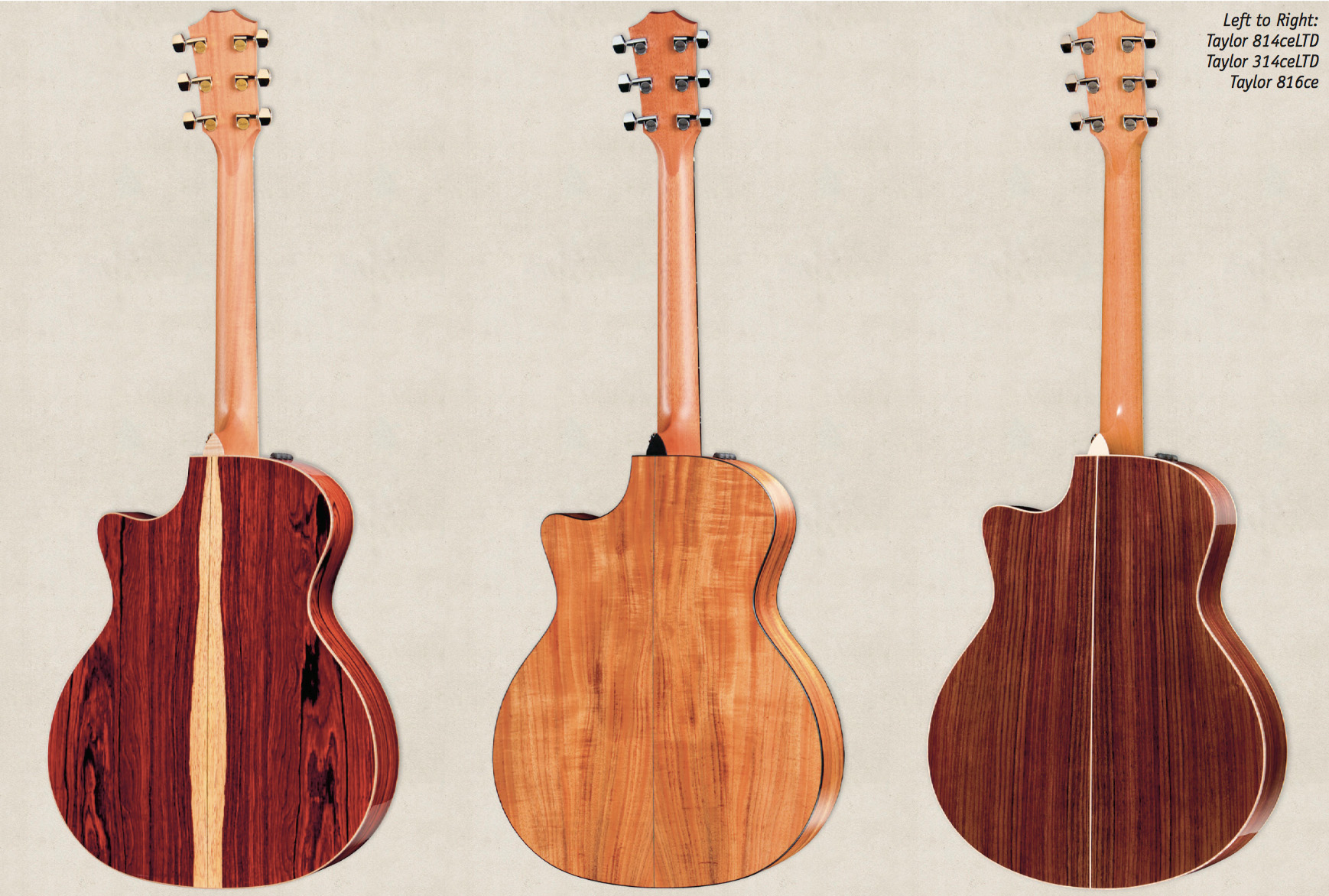The guitar’s top plays an important role in the sound, acting like a speaker’s driver, whereas the back and sides help fill in and flavour the sound.
BACK AND SIDES
IndIan Rosewood
This is found in the 700, 800 and 900 Series of Taylor Guitars. It’s popular for the sheer breadth of sounds that it’s capable of producing. Indian Rosewood is commonplace for those who enjoy a fully voiced acoustic, and those who vary their playing style.
Tropical Mahogany
Found in the Taylor’s 500 Series, Mahogany is known for producing a hefty midrange. A less cluttered sound that’s suited to rootsier music.
Maple
Maple is the wood that you’ll find in the 600 Series. The strength of maple is its brightness and its presence, as well as faster note decay. Recent Taylor maple models have been revoiced to gain further clarity and complexity, giving the player more versatility and a sound that harnesses the strength of the wood’s natural sound.
Hawaiian Koa
Koa is a fairly dense tropical hardwood. In many respects it can be closely aligned with mahogany, in that it’s voiced predominantly in the midrange. However, Koa is not Mahogany, and while the tonal differences might be subtle, they aren’t absent. You’ll find a little extra top end brightness with koa, something a little sweeter.
Cocobolo
You’ll find this in the Presentation Series. Native to Mexico, it’s dense and stiff, and it will also give you a brighter voice than its Indian cousin. It’s a very responsive wood with exceptional clarity.
Sapele
Used in the 300 Series, it’s one of the more balanced and even woods used by Taylor. It’s another dynamic wood, perfect for use across a number of different genres and with a number of different playing styles.
Ovangkol
You’ll find this in the 400 Series. It’s found in Africa, and it’s another strong and diverse wood. Ovangkol closely resembles rosewood in many respects. It’s capable of issuing well rounded lows and highs while retaining a full midrange. It won’t bellow quite as much as much as your rosewoods, but it will get the job done as an every-mans guitar.
TOPS
Sitka Spruce
You’ll see this on most Taylor models. It sits in the middle on the hardness spectrum, making it perfect for pronouncing differences in playing styles, and giving an honest representation of the playing dynamic.
Western Red Cedar
This is found on the 512/514 steel- & nylon-string models. It’s less dense than spruce and hence produces a softer and warmer sound. This isn’t going to suit heavy players that demand a powerful sound from their instrument. It’s best used with a light touch, cedar is actually louder than spruce. That said, those who like to test the limits and push an acoustic beyond it’s natural tonal spectrum might like the crudeness of a cedar at full throttle.
Hardwood
This is found in the Koa Series, 500 Series and Mahogany-top 300 Series. A hardwood-top guitar will preference strength and clarity. The essence of the playing is pushed, as opposed to accentuating gentler nuances as a softer wood might.

